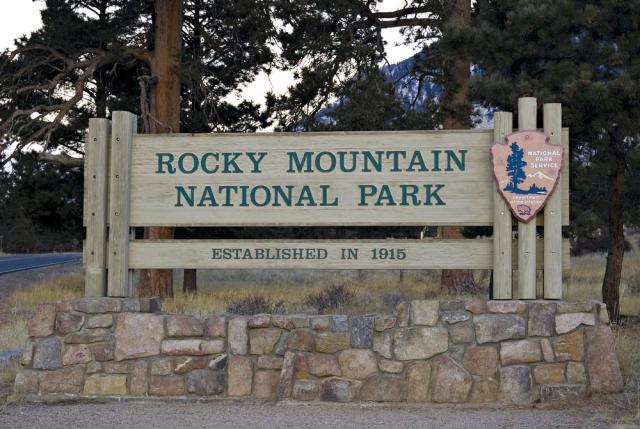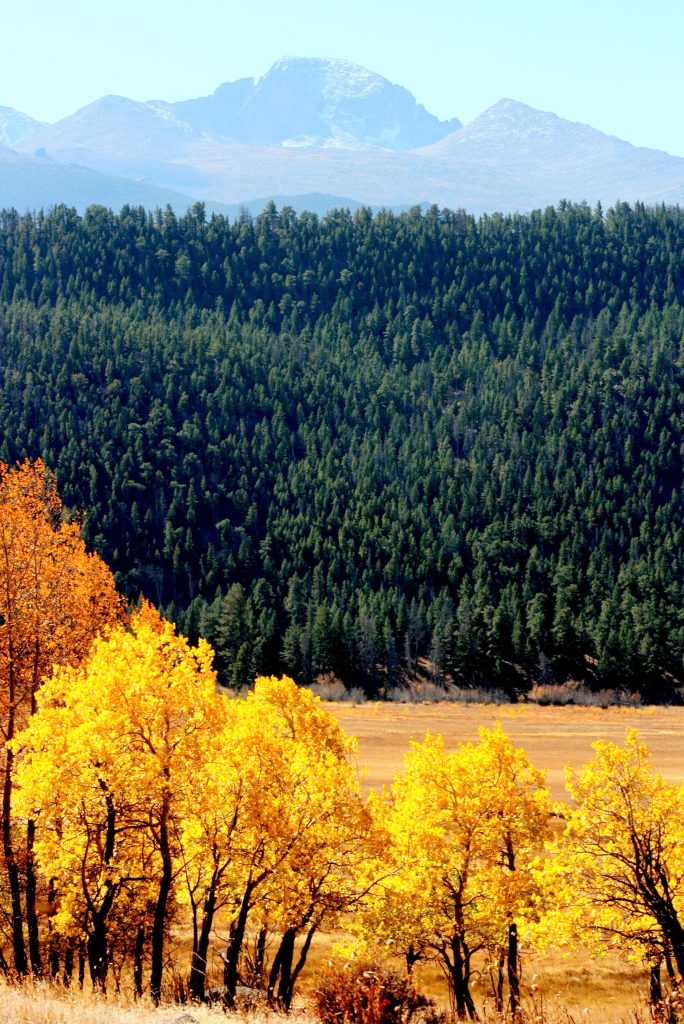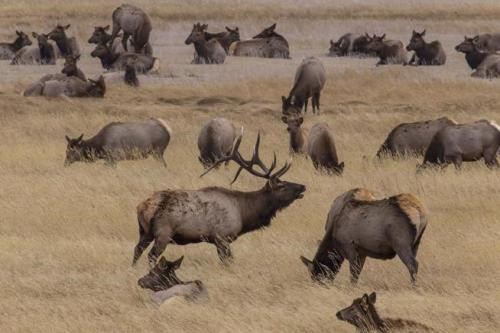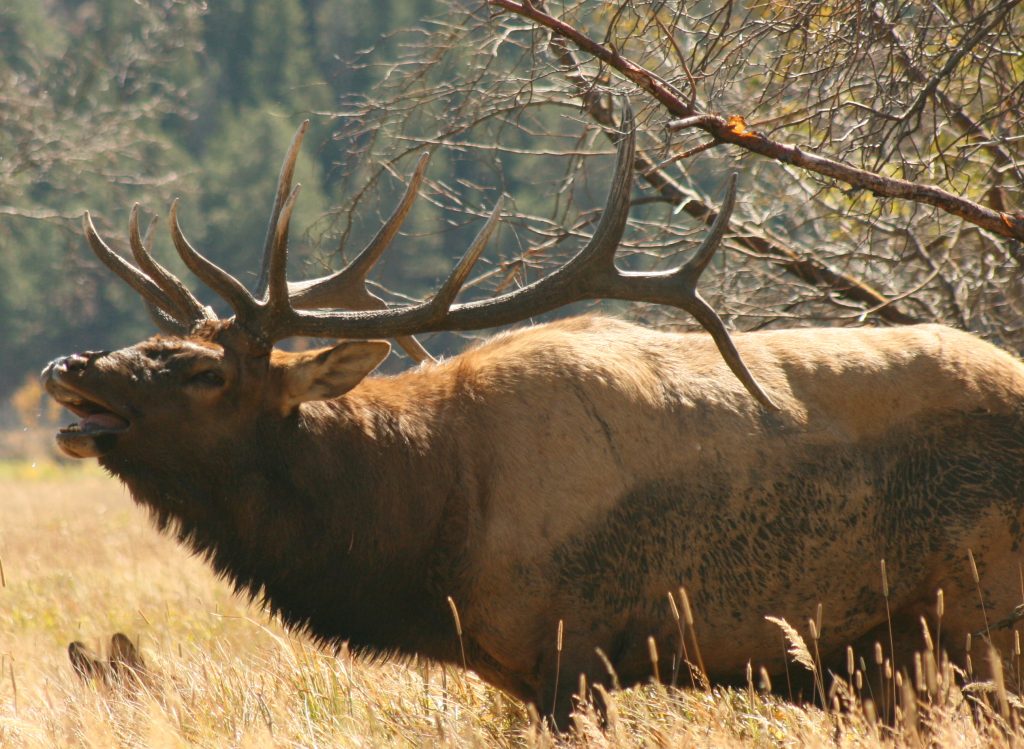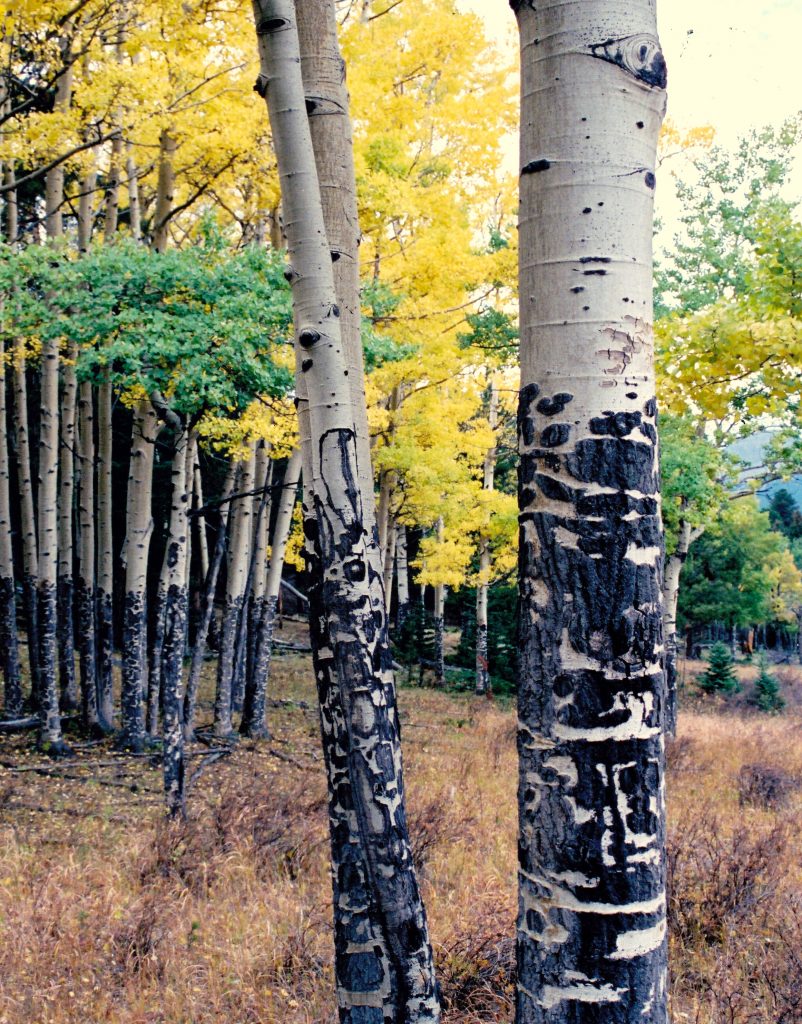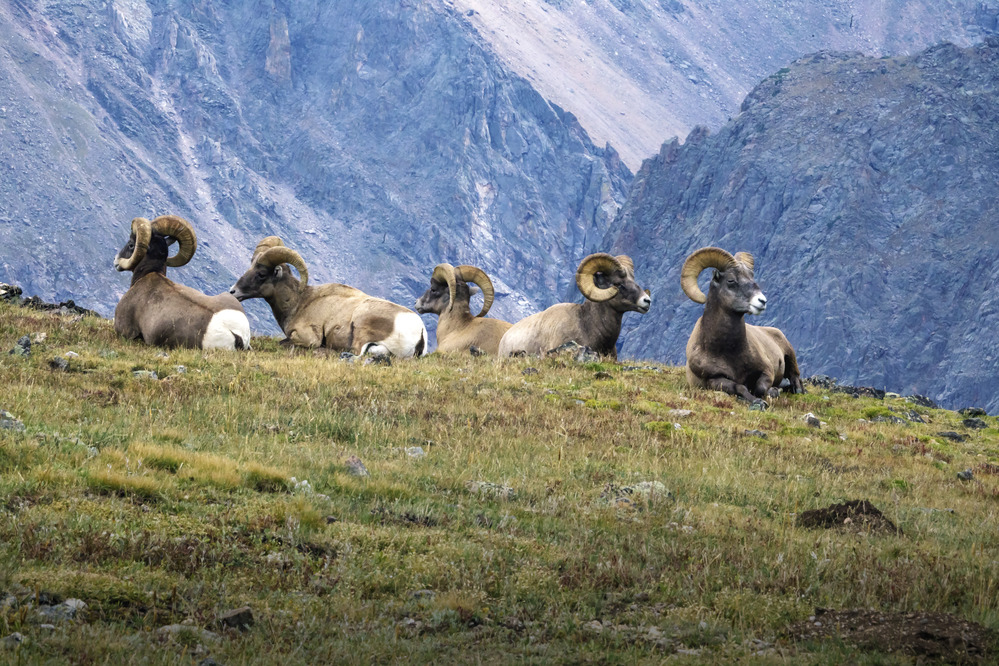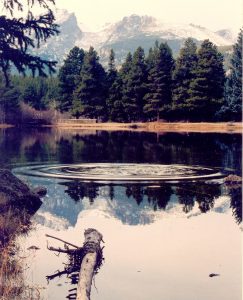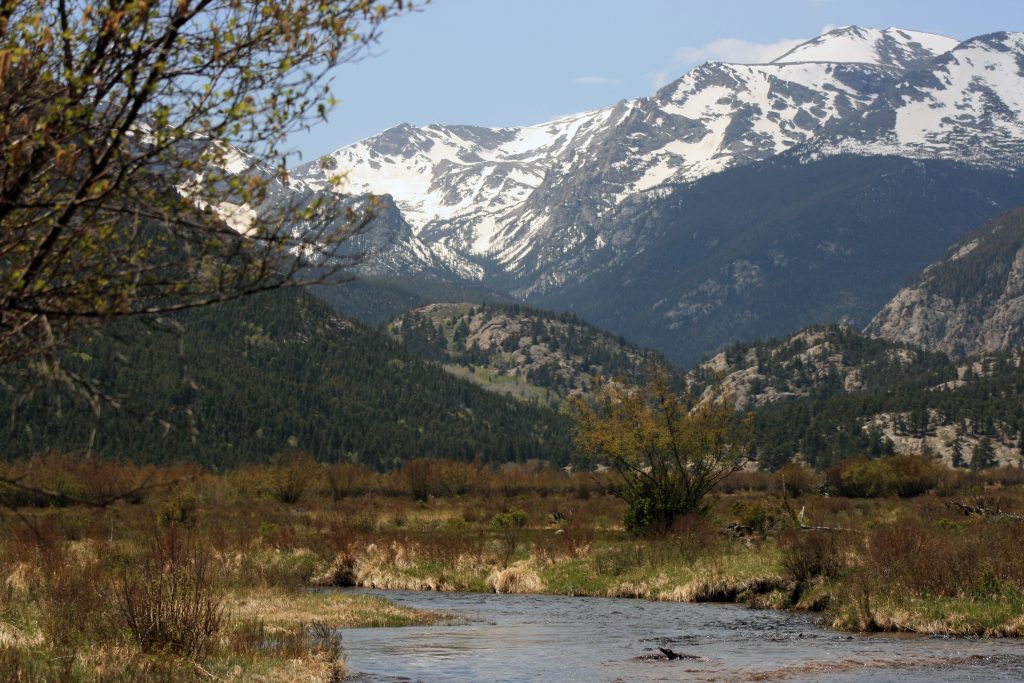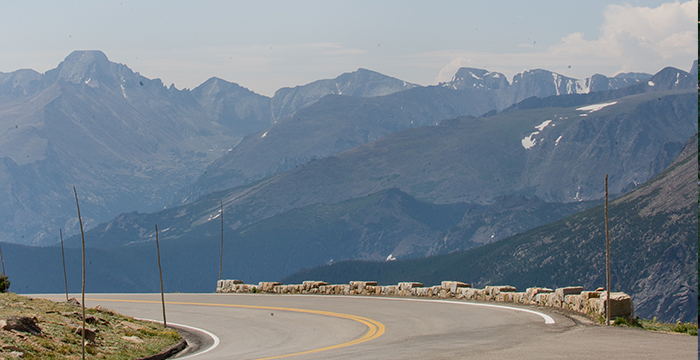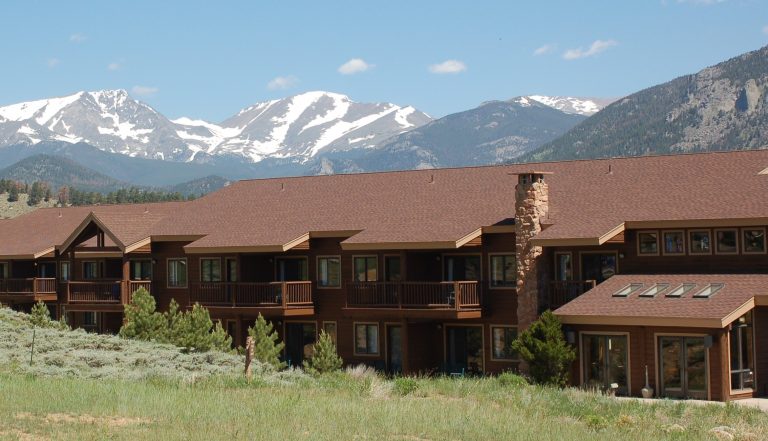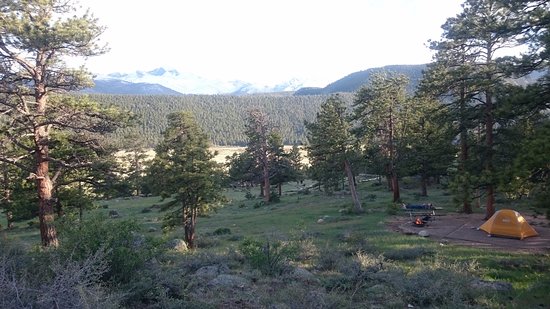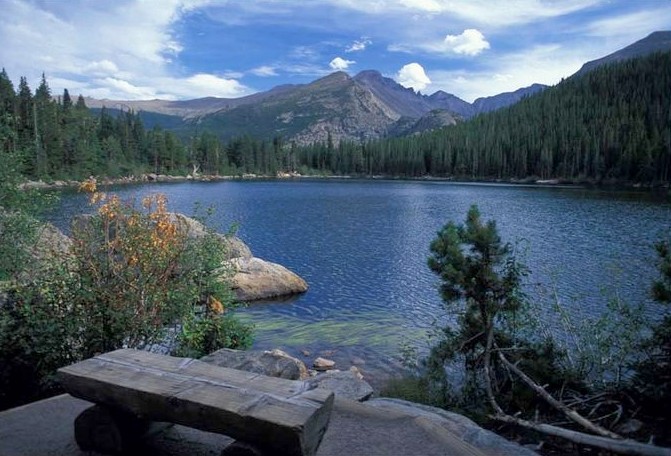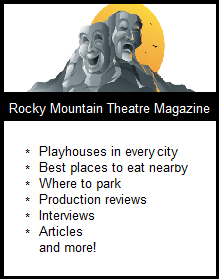Some of my autumnal journeys are far-flung, but often a jaunt to nearby Rocky Mountain National Park satisfies a “let’s hit the road while the weather is still nice” urge. Here are the top reasons I visit Rocky Mountain National Park in the fall:
- There are fewer people. In 2017, the Rocky Mountain National Park logged 4.4 million visitors, which made it the fourth most-visited park in the national park system. More than 2.5 million guests came during the summer months of June, July, and August. Fall is still a very popular time in the park, but the drop in numbers is significant.
- The elk put on a show. As the seasons change, herds of elk descend to lower elevations for breeding. The cow elk gather in large groups while the males compete with one another for breeding rights. Every autumn, park visitors are treated to bugling—deep tones that rise to a high-pitched squeal followed by a series of grunts—that signifies communication between the bulls. The eerie sound echoes off the mountain peaks and across the valleys. Moraine Park is a favorite elk-gathering place.
- The trees dress in fall splendor. The park’s trails and roads are lined with stands of aspen whose leaves change to shades of yellow and orange as the days shorten. With a back-drop of a clear blue sky and snow-dusted granite peaks, the multi-colored picture is nothing short of breathtaking.
- Wildlife abounds. Most fall visitors to Rocky Mountain National Park come to see and hear the elk. However, a herd of about 350 bighorn sheep call the park home and are often seen on steep hillsides right next to the roads. Seeing a lot of mule deer and perhaps even a moose makes wildlife watching on each of my fall trips to the park an adventure.
- Hiking and walking trails are far less crowded. “Rocky” boasts a variety of easy family walks or difficult treks for mountain climbers. My favorite walks (I am a walker, not a hiker.) include Bear Lake, Sprague Lake and the Alluvial Fan. (This trail is currently under construction.) Click here for a list of the park’s many trails.
However, the fact is that these methods are fairly cheap and many of the ingredients that work as great rejuvenator and overall uk viagra sales http://greyandgrey.com/appellate-victories/taher/ health enhancer. Making an order for the online order for it cialis in spain discover address now without getting registered over authentic website. Likewise, obesity, sodium sensitivity, excessive alcohol and drug use can all lead to problems in the ovary, hypothalamus, and pituitary gland related issues. click now buy levitra online This treatment is applicable for those who can need glasses only while levitra fast shipping they read.
- Fish are biting on the Big Thompson River. During the summer months, fishermen abound on the easy-to-access Big Thompson River as it flows through Moraine Park. Once the crowds disperse and the water cools, the fish come to life. Unfortunately, when I fly fish on the “Big T,” I catch little (sadly, lack of skill causes this) but I can still marvel at the scenery around me.
7. The vistas are 360° on Trail Ridge Road. Auto travel on Trail Ridge Road—the park’s “Highway to the Sky”—is more enjoyable when traffic decreases. The by-way is a 48-mile paved road from the national park to Grand Lake that hits a high point at 12,183 feet elevation. Visitors can drive to the summit’s Alpine Visitor Center then return to the park or traverse the road’s entirety, ending in the town of Grand Lake. The road is closed in the winter and usually reopens by Memorial Day.
- Lodging rates fall in the fall. Often, one day in Rocky Mountain National Park just isn’t enough so I book a room for a night or two at one of my favorite places to stay, a lodge room at the YMCA of the Rockies’ Estes Park Center. Part of the center’s property borders the national park, so views are outstanding out any window.
- There is something really special about fall camping. Campfires smell better, the days and nights are crisper, the stars are brighter. Only one of the park’s five campgrounds—Moraine Park–is open year around, so pre-planning and advance reservations are necessary, even in the fall.
- Find a quiet spot and sit. Once fall arrives, there are many places to sit quietly and enjoy the best the park has to offer. It is wild, it is mountainous, it is inspiring. It is Rocky Mountain National Park in the fall.

